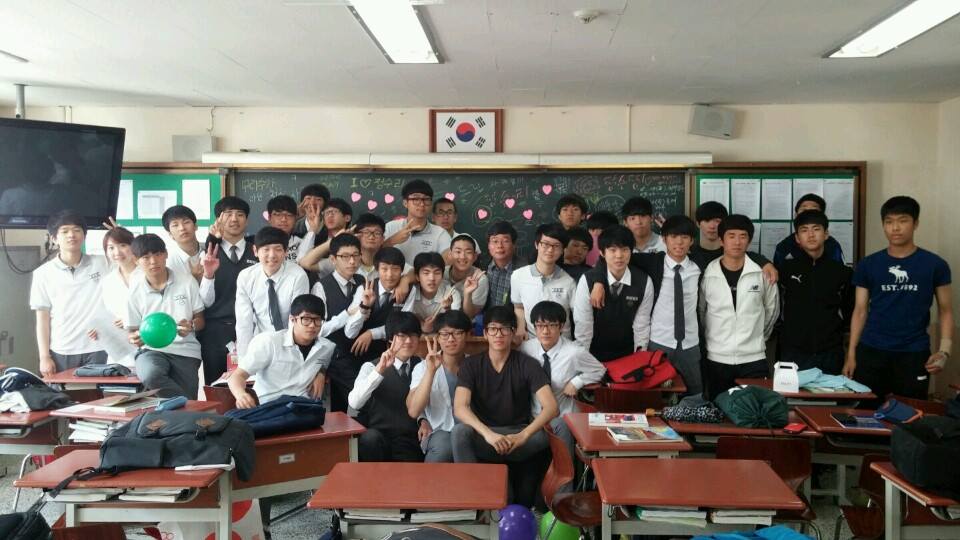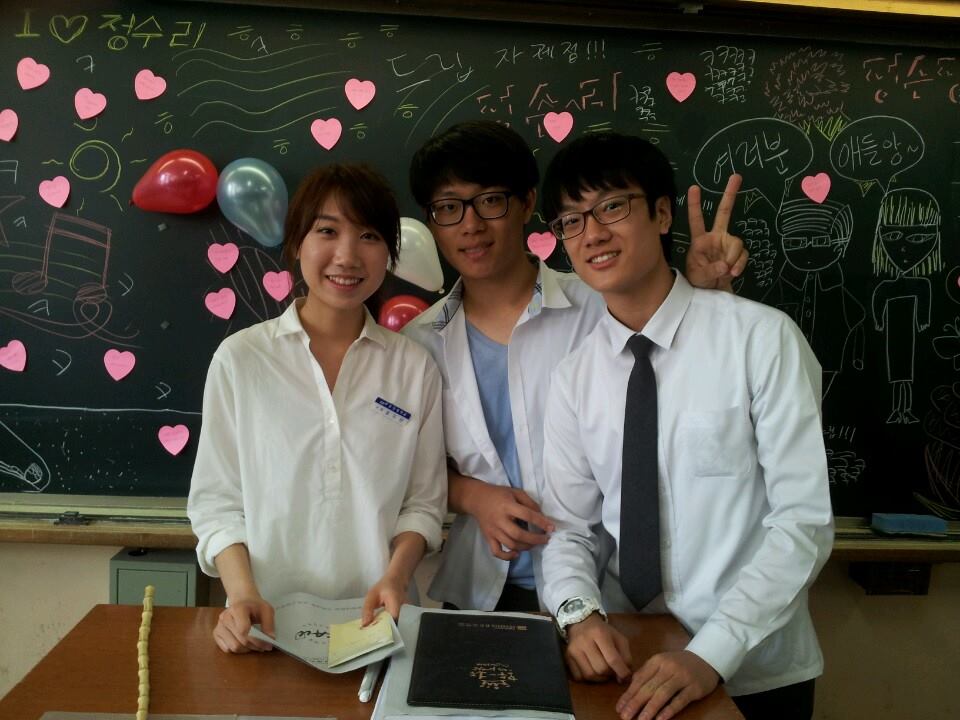
5,820 miles — this is the distance that former Palo Alto High School student Henry Do Hyun Kwon traveled when he moved moved back to his native country, South Korea, this winter. After first coming to Palo Alto in 2011, Kwon spent three years of school at Paly. While Kwon’s time in Palo Alto was short-lived, he said that he really enjoyed his time living the “California” lifestyle and felt that Palo Alto was the best place in which he has ever lived.
Most of all, Kwon enjoyed Palo Alto’s “great weather, great food and great people.” During his time here, Kwon was an active, high-achieving student. Kwon played badminton and tennis, took “inspirational” adventures through state parks and made some of “the best relationships [he] might ever make.” Although Kwon was sad about losing his new friends in the move back to South Korea, he has been able to stay in touch through social media and believes that the friendships he made will last for a lifetime.
The Paly Voice decided to catch up with Kwon via Facebook to find out more about the differences between life in Palo Alto and South Korea.
The Paly Voice: Why did you have to move between the U.S. and South Korea?
Henry Do Hyun Kwon: I went to the U.S. in February of 2011 due to my dad’s job and left in January of 2014 for the same reason.
TPV: Where do you live in South Korea?
HDHK: Now I live in Gangnam, which is a district of Seoul, the capital city of South Korea.
TPV: Can you describe your typical day in South Korea?
HDHK: I wake up at 6:30 in the morning, wash up, eat breakfast and bike to school. School starts at 7:50 and ends at 4:10 everyday except Fridays, when school ends at 3:10. Most 11th and 12th graders in Korea are required to stay after school and study until night, but my school lets students go early because most students go to “hagwons,” after school private classes and tutoring sessions. As for me, I don’t go to “hagwons” yet, but when I get home, I take online classes, which is another studying trend here in Korea. For free time, I usually play computer games. I eat dinner around 7:30 to 8 and go to sleep 12 [midnight] to 1 a.m.

TPV: What are the academic differences between the U.S. and South Korea?
HDHK: School operates quite differently in Korea. First of all, the teachers are the ones moving around classrooms, not the students. Schedules are not adjustable. Students must decide on a curriculum track between the natural sciences and liberal arts. Also, Korean schools are greatly influenced by parents. Currently, many schools in Korea are either single-sex schools. My school has both sexes, but the classes are separated by gender. Korean schools have four big tests in a school year — a midterm and a final for each semester. Teachers in Korea like to make tests extremely hard, especially math teachers. The 11th grade average for the math midterm this year in my school is expected to be around 30%. Usually there’s not too much school homework in my school, which is a decision regarding the homework from “hagwons.” Korean high school students lack time from the intense studying. A survey revealed that the average sleeping hours for Korean highschoolers is about five hours and 30 minutes. One positive thing here is that lunch is 70 minutes long.
TPV: How do students choose an academic path, and how does it affect their curriculum and future jobs?
HDHK: Students decide their academic paths based on their future plans, their previous grades, interests, etcetera. And those who can’t decide will take tests in order to find out which path they choose. Students usually make up their minds when they enter high school [entering 10th grade]. The curriculum gets divided in 11th grade. You aren’t necessarily “locked in” to a specific career, but you pretty much get restrained in your future plans. For example when you choose the liberal arts curriculum, you are not very likely to choose a mathematic or scientific based major in college. Most importantly, students take different high school entrance exams based on what curriculum you were in, and the Korean high school entrance exam is the most common path students take to go to college.

TPV: What are some social differences between the U.S. and South Korea?
HDHK: In America, everyone needs a car. We need to drive in order to dine out or go grocery shopping. But in Korea, my family doesn’t even have a car yet. Daily life is possible without a car. Instead, public transportation is highly developed. Housing in Korea is mostly apartments. Wherever you go in Korea, you are bound to find apartments — from the little ones, five stories tall, to 40-story apartments. Some call Korea “a forest of apartments.” In Korea, delivery food is very developed. Most fast food restaurants deliver, including McDonald’s and Dominoes. The most popular delivery food here is probably chicken.
TPV: What do you and your friends do for fun?
HDHK: Social life is not that different here in Korea. When we hang out, we can go to the theater or play games. The most popular thing is to go to “PC cafes” to play computer games.
TPV: What kind of music and movies are popular?
HDHK: Koreans love watching movies of different genres. Some popular foreign movies in Korea are “Amazing Spiderman 2,” “Rio 2,” “Captain America: The Winter Soldier,” “Divergent” and “Mr. Peabody and Sherman” — all in the top 10 movies currently. The music trend in Korea currently is dominated by “Akdong Musician,” a sibling duo who won the Korean audition show “Kpop Star” season two. Unlike the stereotype that Koreans only listen to pop, the “Korean style ballad” and R&B music is also popular. And so is Disney music, such as “Let It Go.”
TPV: Would you consider moving back to California in the future?
HDHK: I think I will definitely live in California in the future if I have the choice to do so, and it would be even better to study in the states as a college or graduate student.

